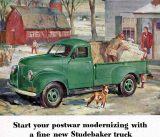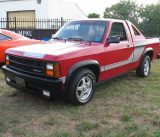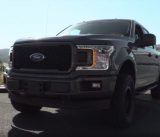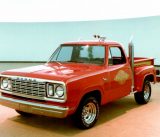
source: ShutterStock
Ford has a firm place in the history of the automotive industry in general, including the world of trucks in particular. The F-Series actually began in 1947 as a 1948 model year, making the 1948 Ford F-Series Panel Truck an original version of the current F-Series models we drive today. With its arrival, the F-Series replaced the pre-war trucks Ford had designed before. Most notably, the new trucks had a wider cab, a flat windshield with one piece, and integrated headlights.
Under the Hood
The 1948 F-Series powertrain and transmission depended somewhat on the model. The light-duty trucks offered a pair of L-head engines. Meanwhile, the others got the choice of that 7H variation of the Ford 226-cubic-inch 6-cylinder that had been used in 1947 passenger cars. That engine had 95 horsepower at 3,300 revolutions per minute. For some extra power, there was also a 239-cubic-inch V8 with 100 horsepower at 3,800 rpm. The F-1 came with a 3-speed transmission and floor shift with an option for a heavier-duty 3- or 4-speed transmission. The F-2 and F-3 both got a 4-speed as standard. Remember that the panel trucks were based on the pickups, so they got similar powertrains. Every model in the F-Series also had the option of the Marmon-Herrington all-wheel-drive unit.

Source: Wikimedia Commons
Color Choices
Even back in 1948, Ford offered drivers a range of colors for their F-Series trucks. There were eight standard paint options, including Tucson Tan, Rotunda Gray, Vermilion, Monsoon Maroon, Feather Gray, Medium Luster Black, Glade Green, and Barcelona Blue. The wheels, running boards, and bumpers were black on most models. However, the F-Series Panel trucks had body-color running boards instead. Early on in 1948, the recessed portion of the vehicle surrounding the grille was tan, but it became silver later in the year. The grille bars also changed color about halfway through the year, going from chrome to silver featuring red pinstripes.
Other Features and Options
In addition to the F-Series pickup truck and the panel, which was based on that pickup, there was a cab over engine chassis style known as the C-Series or F-6 and F-5. There was also a school bus chassis branded as the B-Series with the same F-5 and F-6 options. In addition to the one-piece windshield, integrated headlamps, and wider cab mentioned earlier, the 1948 F-Series offered a See-Clear windshield washer that the driver operated using a foot plunger, a passenger-side taillight, and both a sun visor and windshield wiper for the passenger side. The F-1 version also offered two horns and extra chrome trim.

source: ShutterStock
Later Changes
Since the 1948 model year was the introduction of the F-Series, it makes sense that Ford made some changes in the near future. When it arrived, the headlights were set within the fenders, and the grille was made up of horizontal bars. In 1951 and 1952, the headlights were instead connected using a wide cross piece and three supports, all of which were aerodynamic. The rear window was also wider, and the cab got a new dashboard, plus the nickname “Five-Star Cab.”





